What is bengalin and how to care for the fabric?
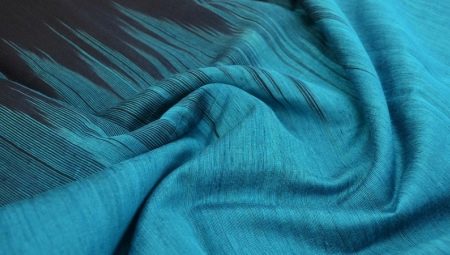
Bengalin is usually called a high-quality, but more budgetary analogue of natural silk. The material has other uses as well, because the outstanding characteristics of the canvas make it a good choice for the production of most clothing and home textiles.
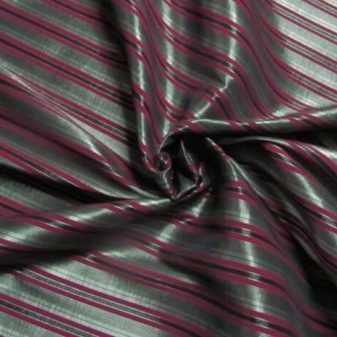

What it is?
Bengalin fabric is a highly stretchable and flowing multi-purpose fabric. During the production of the fabric, perpendicular weaving of threads with a single twist is carried out, as a result of which the surface is covered with inconspicuous rib patterns. In the description of such a weave, the name "twill" is found. The width of the resulting images can be different depending on the thickness and length of the threads used in the warp and weft. By changing the sequence of fibers and making different combinations of them, it is possible to make the canvas more durable or less thick, almost airy. It should also be mentioned that the fibers must be sanded before joining.
You can paint Bengal in any shade that will last for a long time, as well as complement with patterns and printed drawings. However, natural varieties will exhibit greater color fastness than polyester counterparts.
Experts attribute the material to the European luxury class canvases.
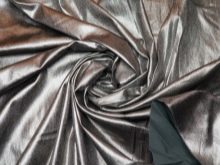
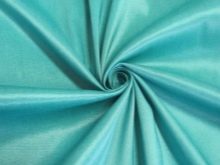
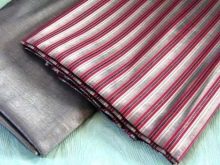
History of origin
Initially, the production of Bengal was carried out only in India, in a region called Bengal. From him, as you might guess, came the unusual name of the material. At that time, the canvas was made of silk threads, and therefore it was expensive.Europe got acquainted with the new fabric only in the 19th century thanks to the French colonists.
The material quickly gained popularity due to its exquisite appearance, which is in no way inferior to Chinese silk, as well as its relatively low cost. Gradually, the production of canvases was established in different countries. Subsequently, the silk component of the Bengal fabric was replaced by cotton, and then synthetic, as a result of which its cost significantly decreased.


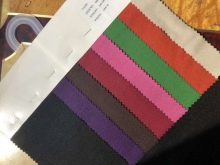
Basic properties
Bengal canvases rarely break because the load is distributed over two strands. The presence of a large number of weave points increases the strength of the material. The fabric stretches perfectly without deforming or stretching, since elastane is always present in it. The more of this component is found in the composition, the stronger the stretch will be. It is worth clarifying that Bengalin differs from other fabrics by its ability to stretch in length, not in width. It maintains its shape, and therefore is often used to create models with complex cuts or reliefs. The stretch material is absolutely breathable and therefore very comfortable to wear. Bengaline products are characterized by a long service life. Low thermal conductivity is a guarantee that clothes made of this material will be cool in summer, but warm in winter.
Bengal linen can withstand a large number of washes without any problems, and clothes made from it elegantly outline the body. It absorbs moisture without leaving it on the skin, does not wrinkle or form wrinkles. The surface of the soft material is very pleasant to the touch. Clothes do not show through, even if the fabric does not differ in thickness. Sewing masters also say that the material is easy to cut and sew, and in general, working with it is not particularly difficult. It should nevertheless be mentioned that Bengal has a tendency to shrink. That is why it is recommended to wash the canvas first before opening. In some cases, its artificial constituents cause irritation, itching and other allergic reactions. Specimens with excess elastane will quickly become engraved.
Many buyers also note that clothes that fit tightly to the figure emphasize not only dignity, but also what they would like to hide.
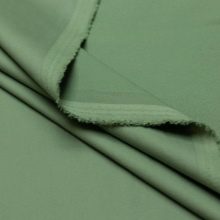

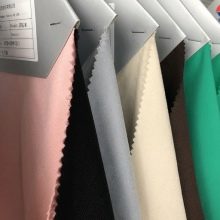
Species overview
Depending on the composition, it is customary to distinguish 4 varieties of Bengal. In a natural fabric, the base fibers are of natural origin: animal or vegetable, and the amount of elastane does not exceed 2%. Wool, silk or cotton are used as the basis for such material. To create an artificial material, fibers of viscose, nylon or other similar samples are used as the base. Blended fabric combines several types of fibers, for example, cotton and nylon or wool and viscose, while synthetic is created on the basis of polyester or nylon. The most popular type of canvas contains 98% cotton and 2% elastane, that is, it belongs to natural.
The cotton used to create Bengal is used in the form of recycled soft cotton wool obtained from cotton bolls. Wool is usually obtained from sheep fleece and silk from silkworm cocoons. The creation of nylon is carried out by heat treatment and stretching of the threads to the required thickness, and wood pulp is required to incorporate viscose into the bengalin composition. Whatever the basis for the fabric, elastane will also always be present in it in an amount from 2% to 5%. The presence of this particular component gives the material the ability to stretch.
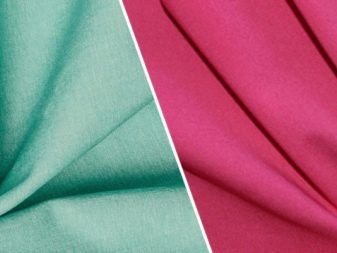
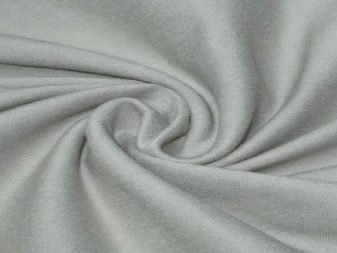
The beautiful and practical Euro Bengal, which is often presented on the market with the “soft” label, stands apart. It contains nylon and viscose, and it is mainly used for bed linen, interior textiles and accessories.The Turkish variety is obtained from a mixture of 98% cotton and 2% elastane, which makes it suitable for the production of any kind of product. It has excellent performance and is prized for its softness.
Practical "cotton" is also created on the basis of cotton, but elastane is present in its composition in a greater proportion. The variety called "jeans" looks very much like thick cotton, in particular, due to the presence of a diagonal twill weave, and therefore is offered as an alternative for sewing trousers and skirts.
The advantage of this fabric is that it does not shine through, it stretches well and is tactilely pleasant.
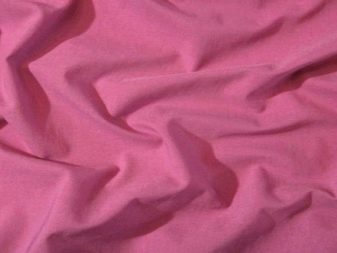
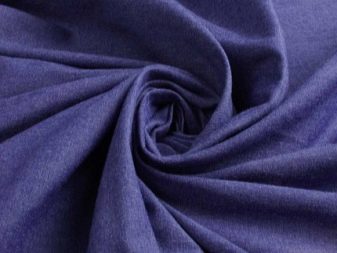
Areas of use
The characteristics of Bengalin fabric make it possible to choose it for creating various kinds of clothing. Dresses, sundresses, skirts and blouses, as well as trousers and shorts can be Bengalin in everyday wardrobe. Durable material can be used for sewing light outerwear such as windbreakers. Wear-resistant fabrics are also suitable for creating children's wardrobe: both light summer and more durable demi-season outfits. Quite often, accessories are created from Bengal: false collars, cuffs or sleeves.
The structure of the material allows you to create exquisite draperies on the fabric and obtain products with unusual cut. The canvas is also used for sewing home textiles: curtains, pillowcases for decorative pillows, bedspreads and more. Bed linen from Bengal differs in the duration of operation. The fabric with the addition of silk threads is ideal for creating wedding and evening looks, as well as scarves and stoles. The presence of wool allows you to use the fabric for sewing cardigans, jackets and coats. The fabric is often used for trims such as ruffles and embellishments such as woven flowers, brooches or hairpins.


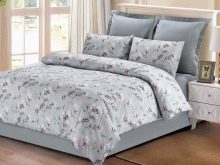
Care rules
Bengal is a delicate material and therefore requires special care. You should always read the information provided by the manufacturer, because it usually contains recommendations for ironing and washing a particular product.
We must not forget that the capricious material quickly becomes covered with holds and is prone to shrinkage.
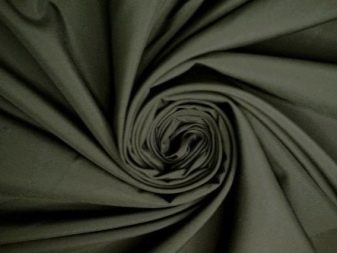
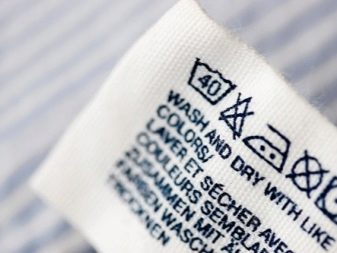
Washing
It would be most correct to wash the Bengaline by hand, and use the washing machine only in case of serious contamination. The material should be processed at a temperature not exceeding 30 degrees. In the automatic device, you will need to select the "delicate mode" or "for washing silk clothes" programs, and it is better to make the speed mode as low as possible. Fabrics are more suitable for liquid cleansers or dry ones, but without aggressive ingredients. Under no circumstances should the material be exposed to bleach or chlorine-containing agents.
It should be mentioned that some Bengal items can be processed only by dry cleaning, which the manufacturer must indicate. In addition, the fabric must not be washed with other fabrics.
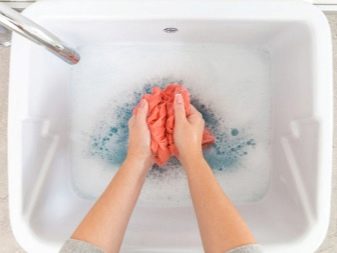

Drying
Bengal products are recommended to be dried in the fresh air, protected from direct sunlight. It is important to remember that exposure to the sun can cause the color to fade. If the clothes still have to be dried on the balcony, then it is better to turn them out to the wrong side. In order to avoid the appearance of creases, things are first straightened. Experts do not recommend placing Bengal on radiators or special dryers, as there is a high likelihood of yellow spots appearing.
Spinning in the washing machine should be avoided if possible, but if absolutely necessary, it should not exceed 10 minutes. It must be carried out at low speed. Ideally, Bengal garments are lightly wrung out by hand, and then immediately leveled and hung so that the remaining moisture can drain freely.
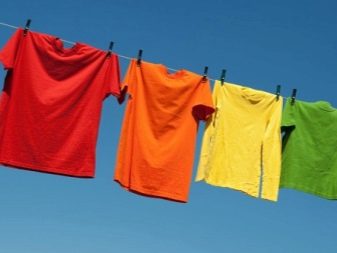

Ironing
It is best to smooth out the Bengal with a steamer.If this is not possible, then the product is first turned inside out, and then gently ironed with an iron set to the minimum setting. In this case, we are talking about a temperature not exceeding 130 degrees. You can also resort to using the special silk program. Heat treatment is always carried out through damp gauze or cloth. After ironing, the Bengal items are hung on a hanger.
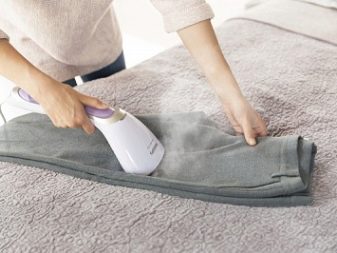

Review overview
On the Internet, there are mostly positive reviews about Bengalin fabric. It is noted that it is very easy to interact with the material, and if problems arise with sewing products, then, most likely, the trouble lies in the acquisition of a low-quality product. Bengal linen clothes are comfortable to wear: both tracksuits for wearing on hikes and wedding dresses. Jeans made of this fabric do not stretch at the back and at the knees, and also do not shine through. In some cases, the Bengal does not even have to be ironed.
Of the shortcomings, the most often distinguished is that the products sit down. Pants especially suffer from this, you even have to select models one size larger in order to be comfortable to wear them after washing. Hooks often appear on the fabric, after which its attractive appearance deteriorates significantly. Some customers dislike the synthetic sheen of the material.
It would be correct to mention the rather high price of the canvas.











